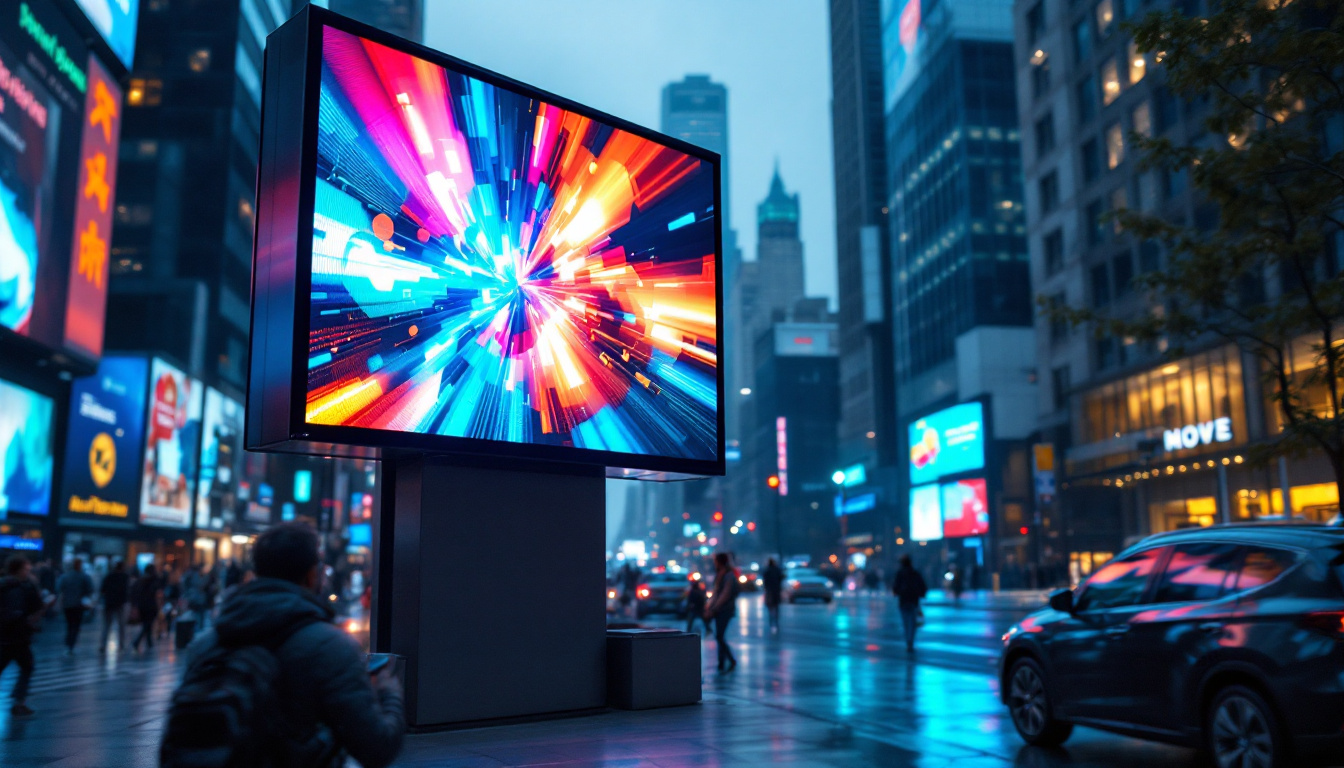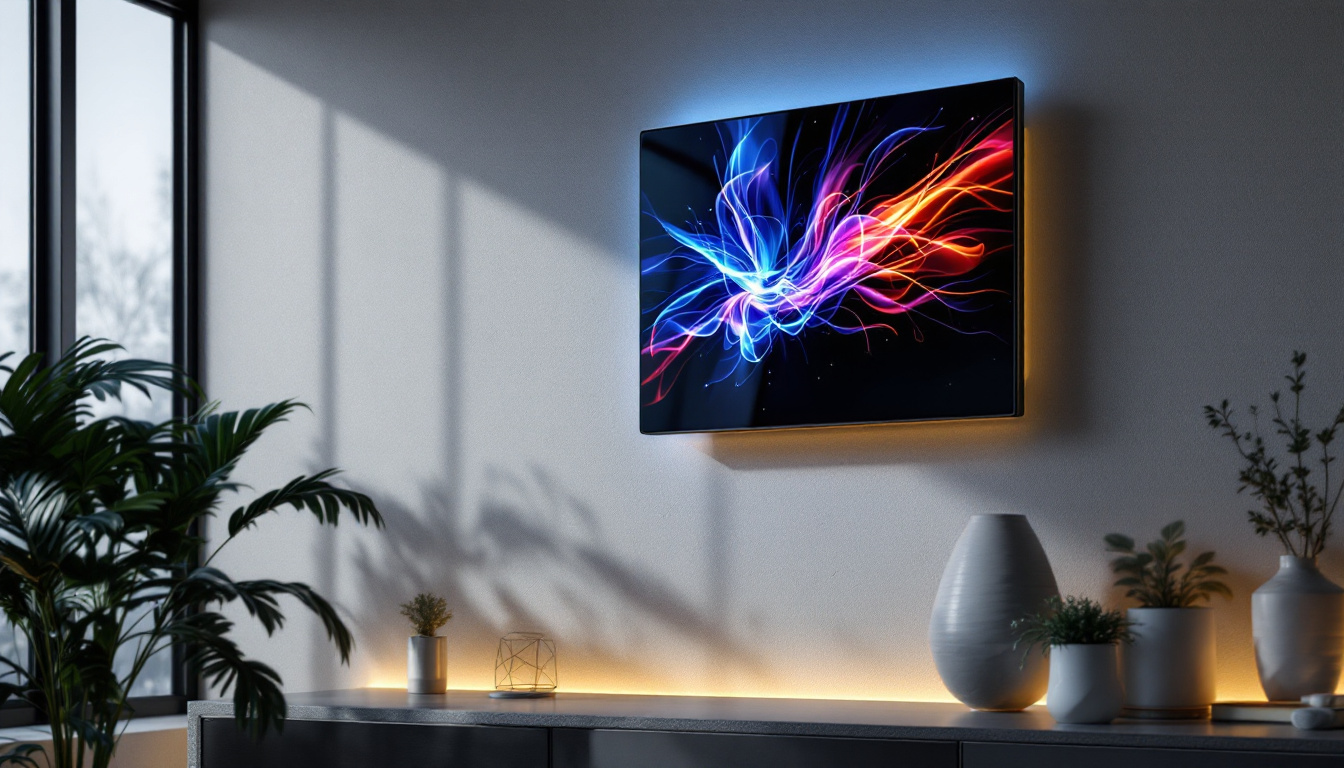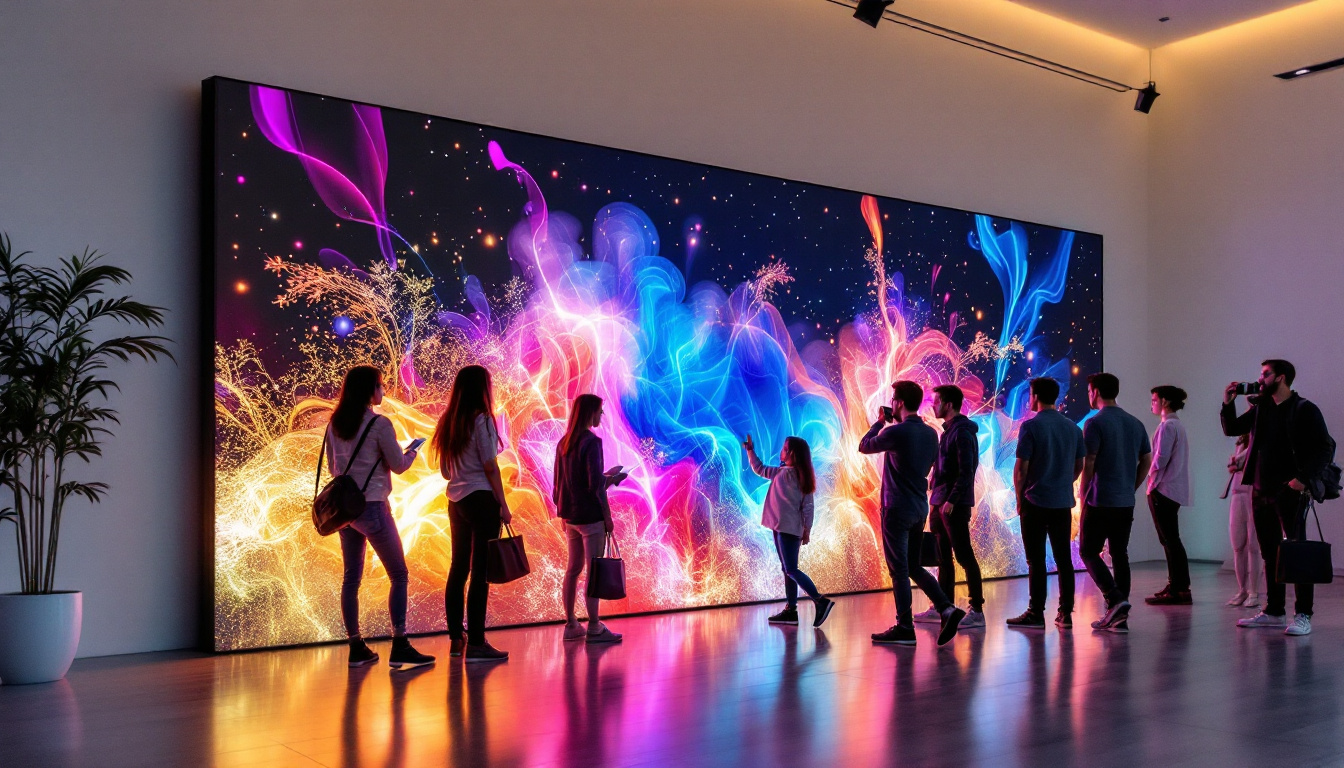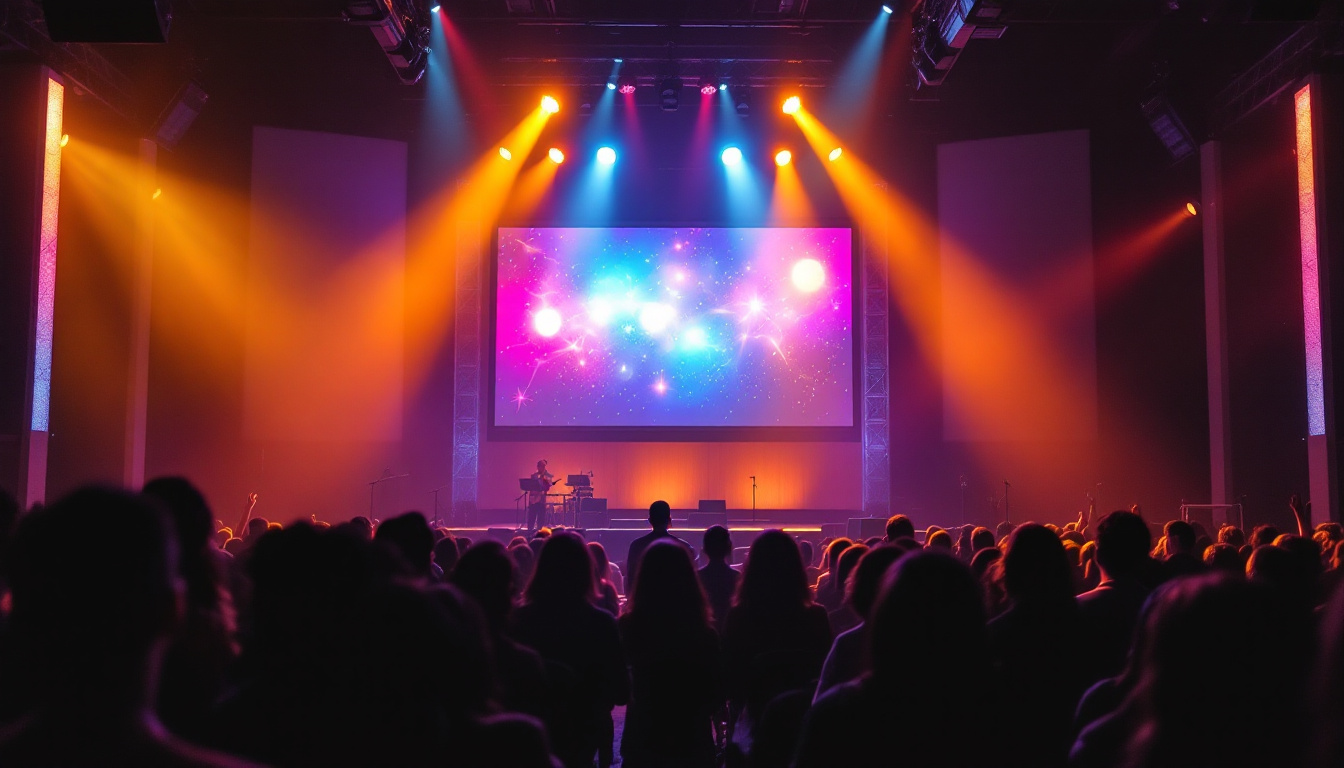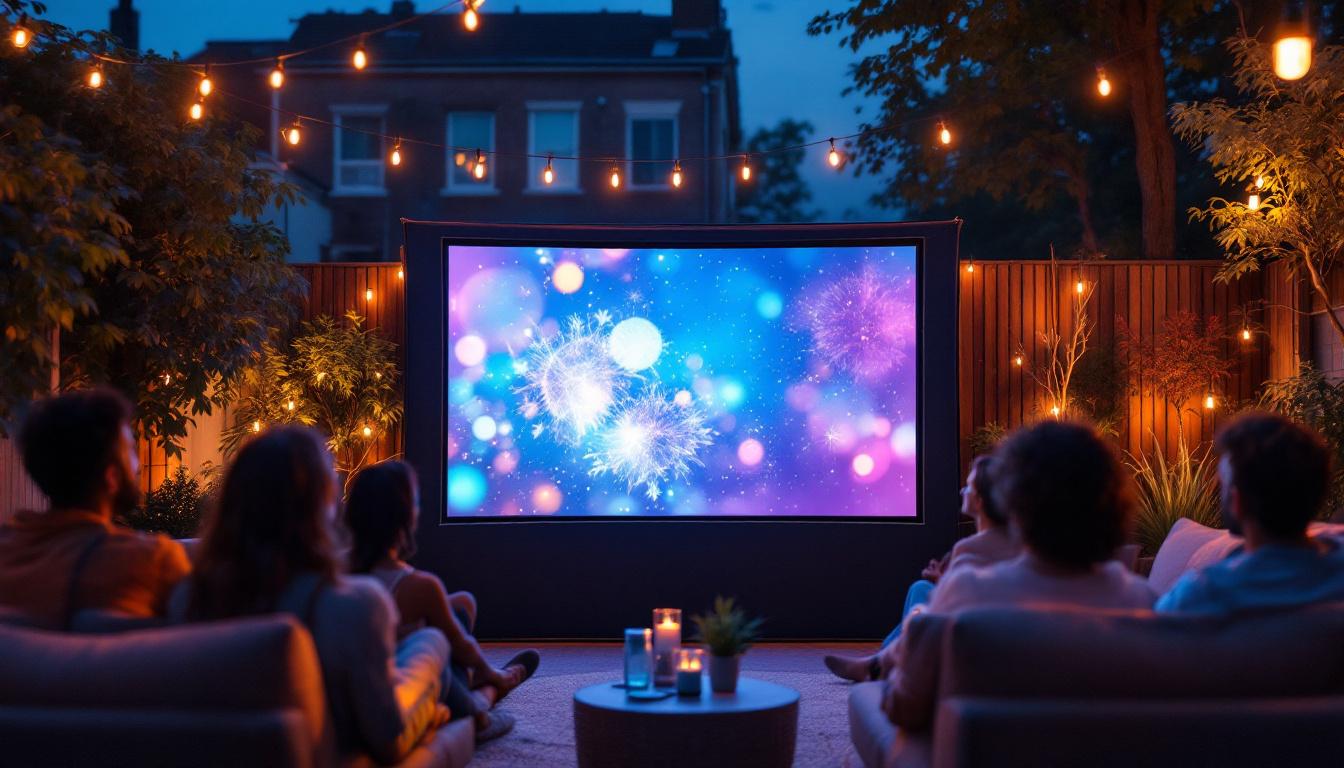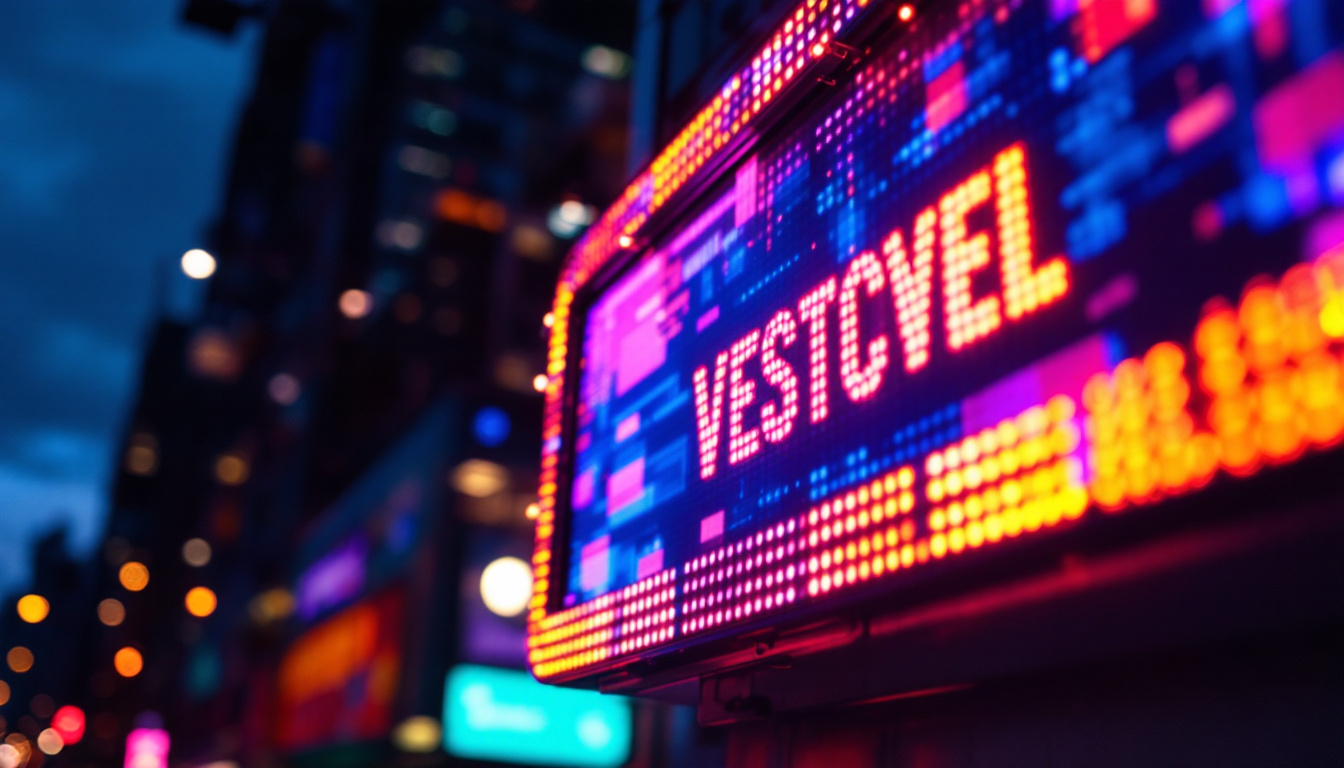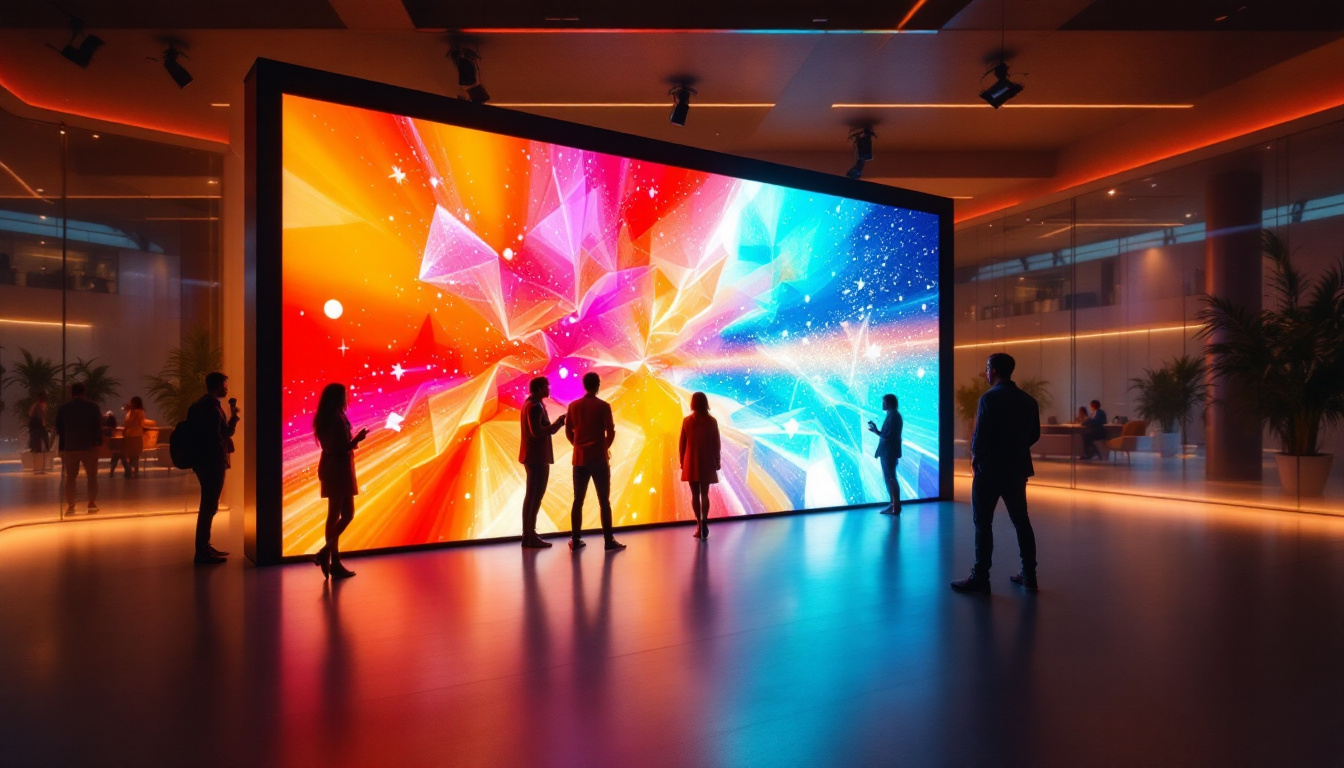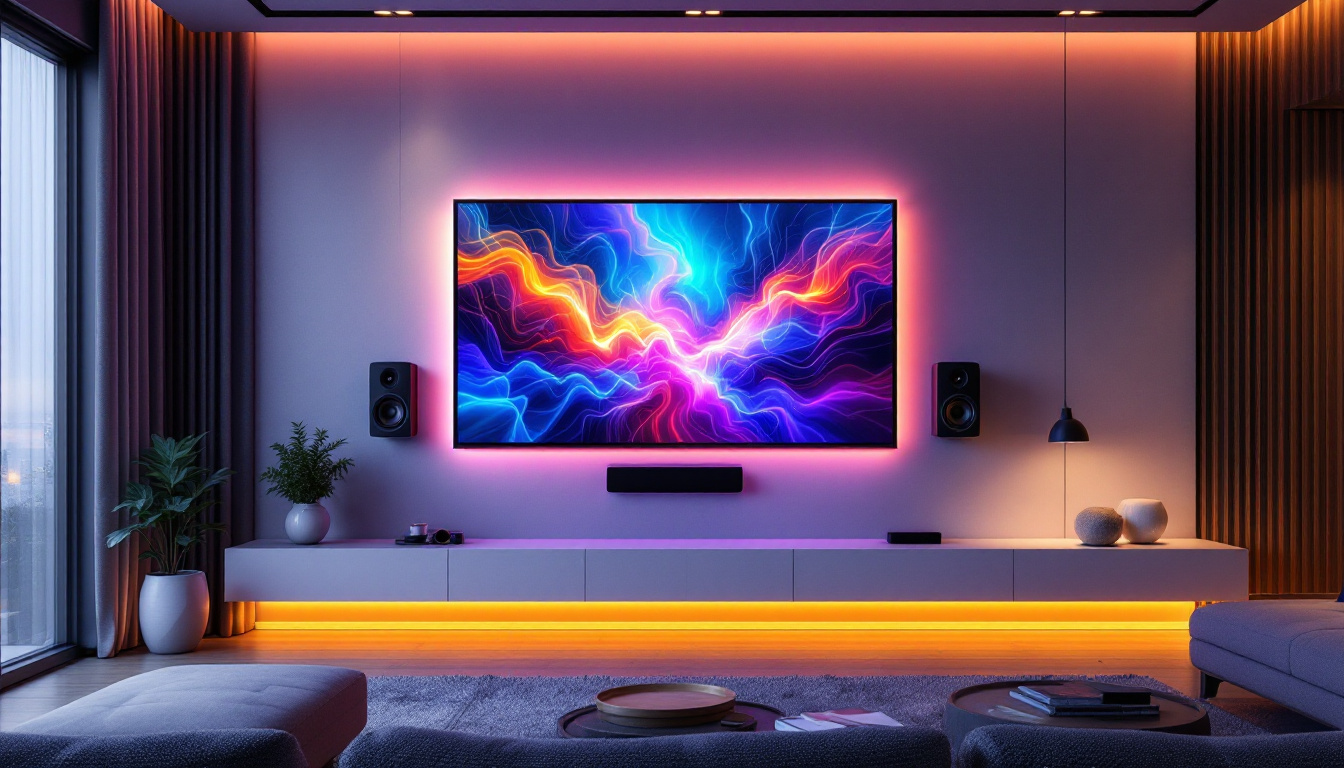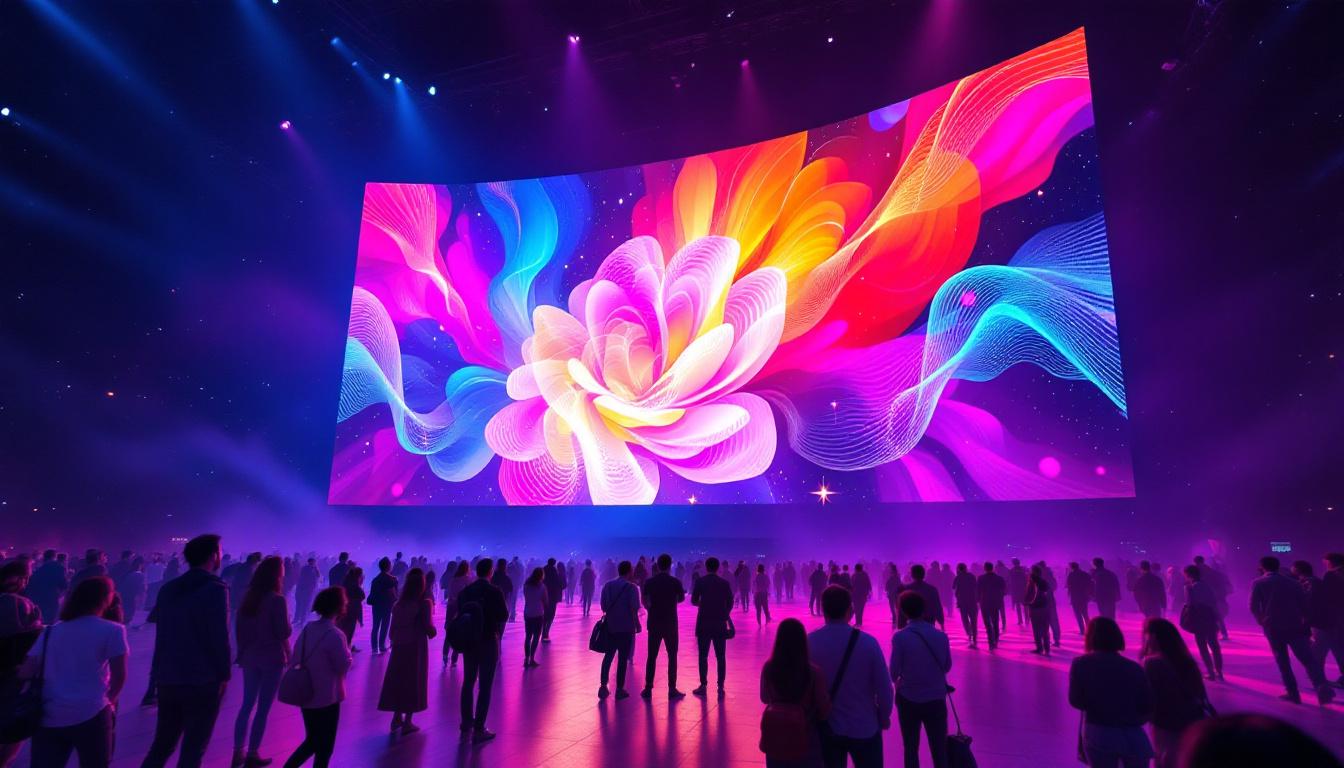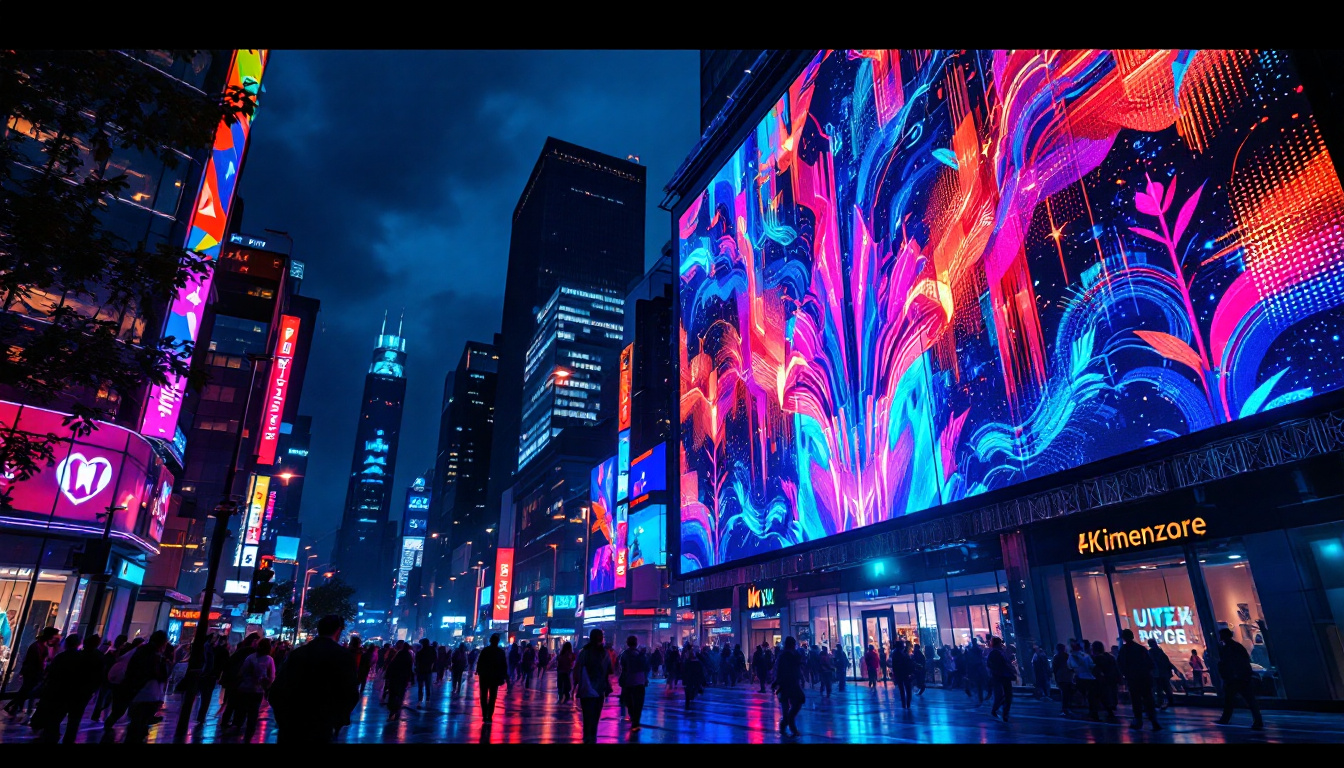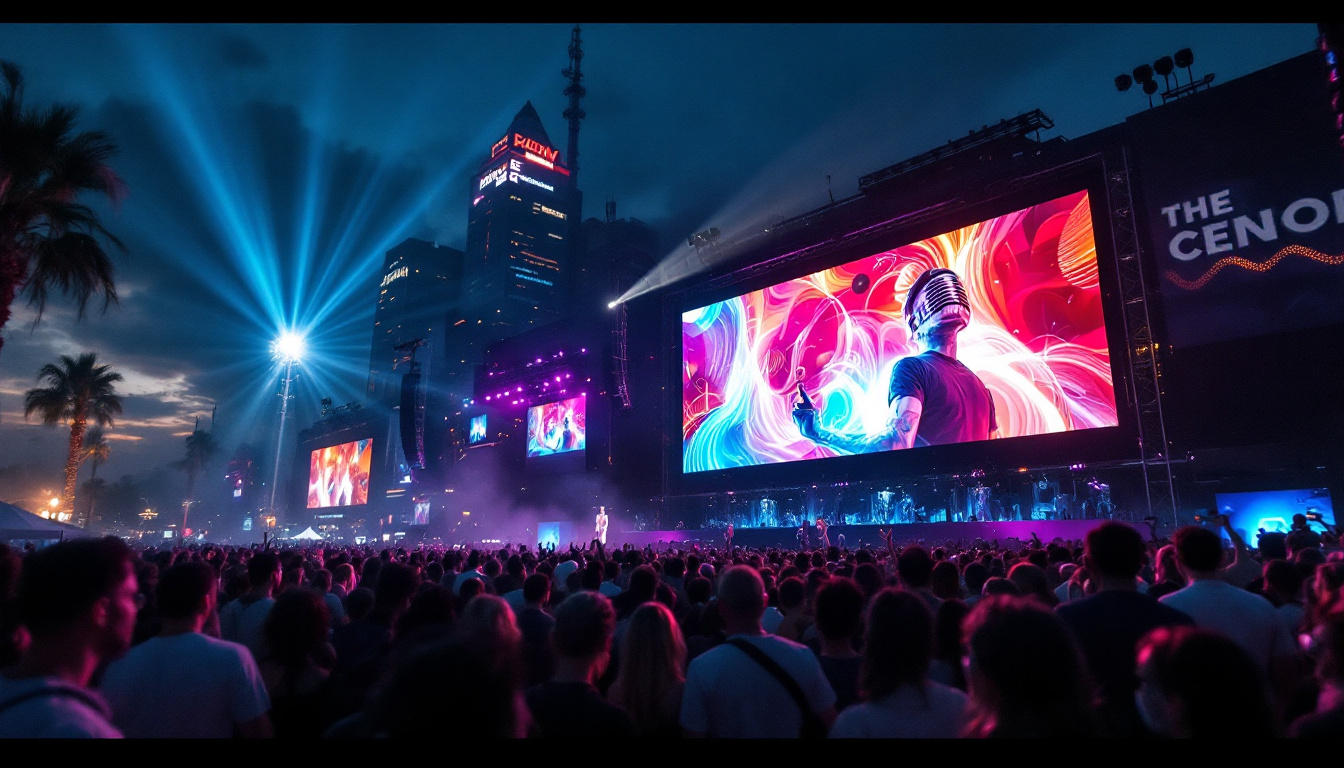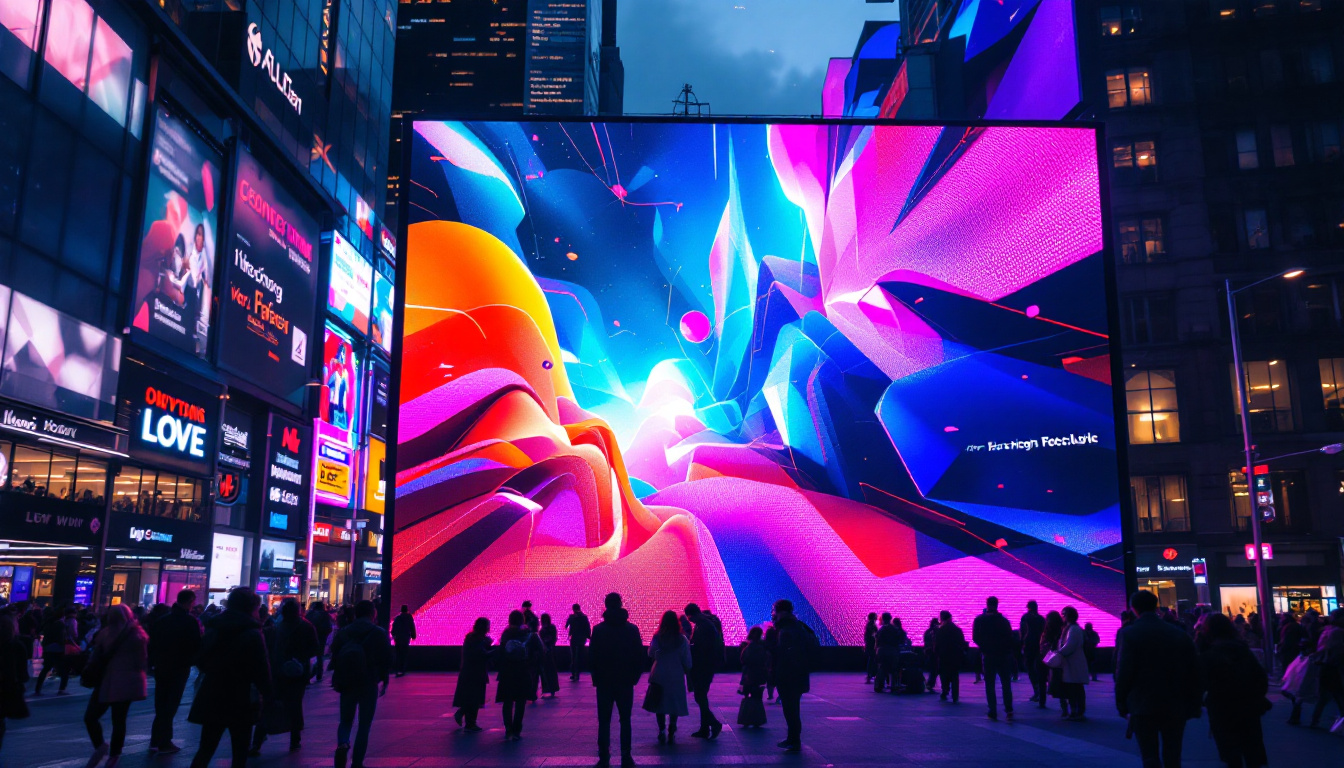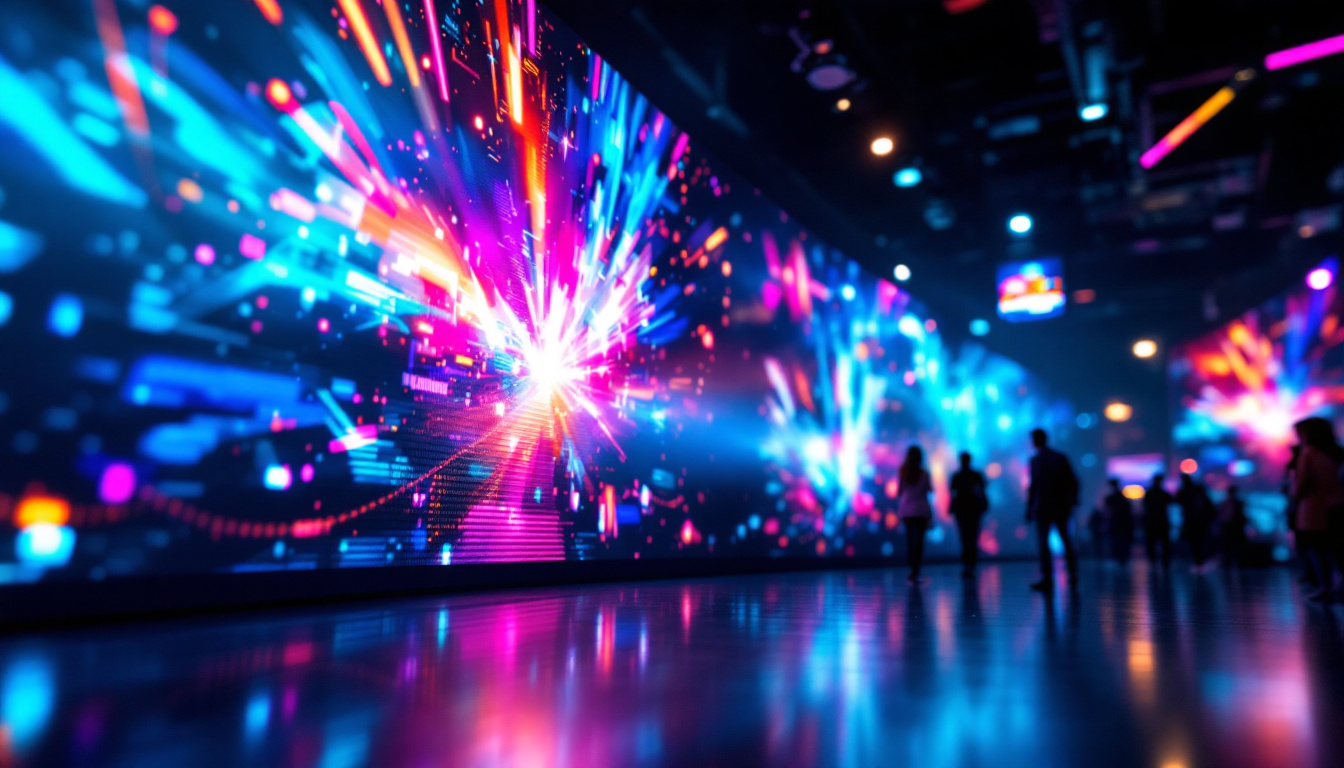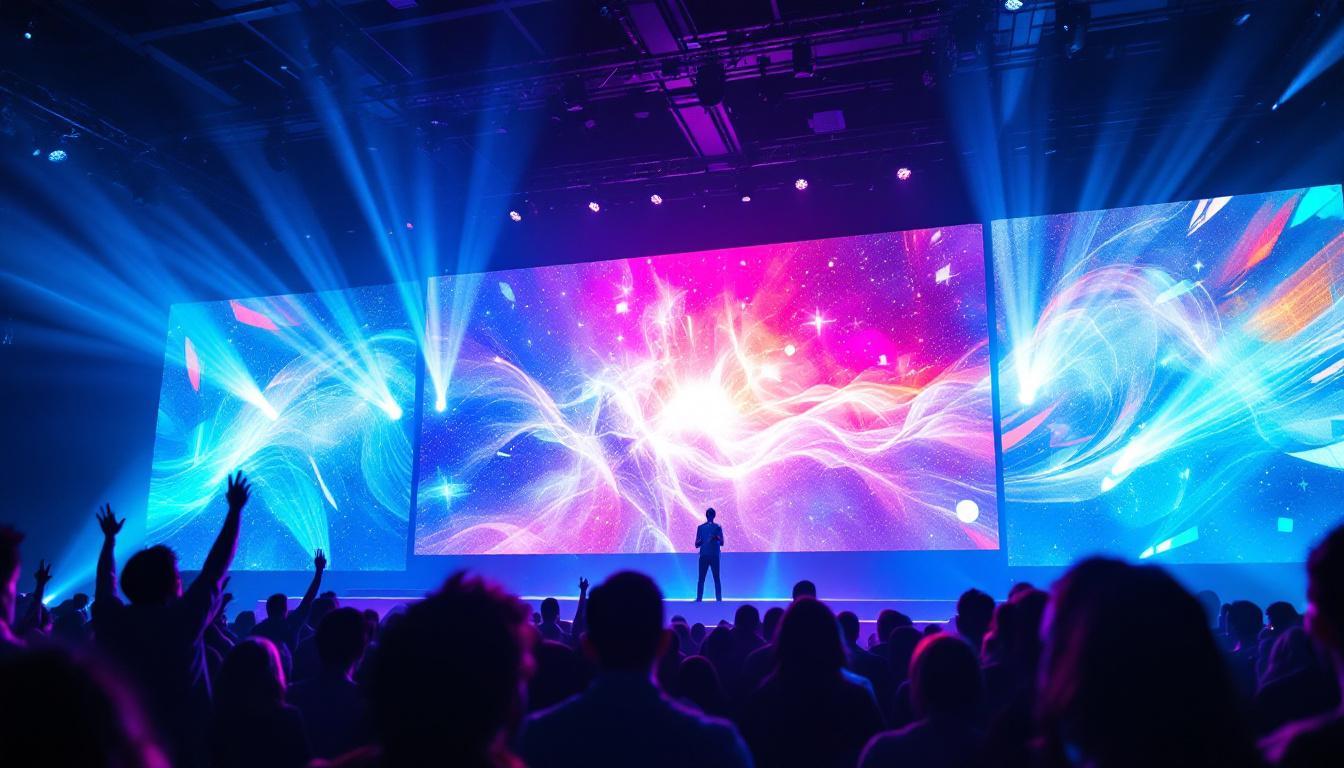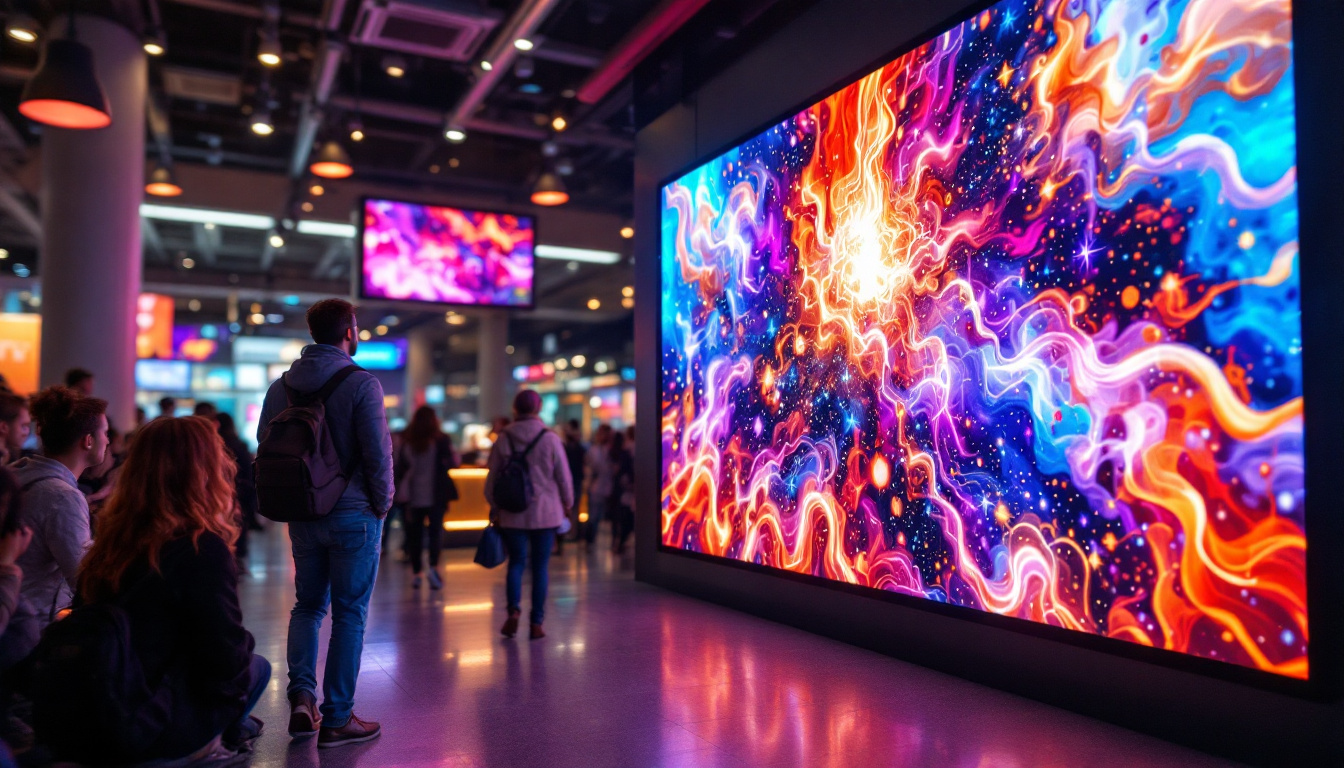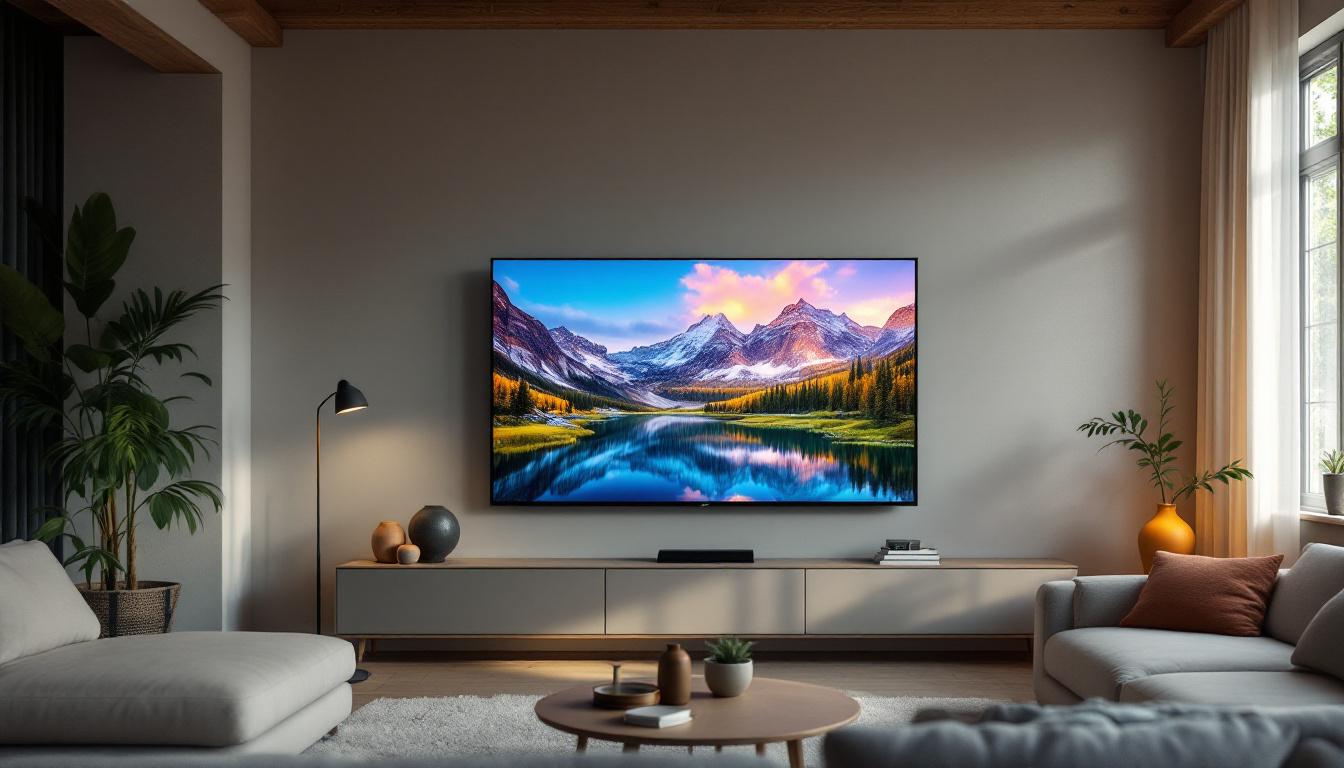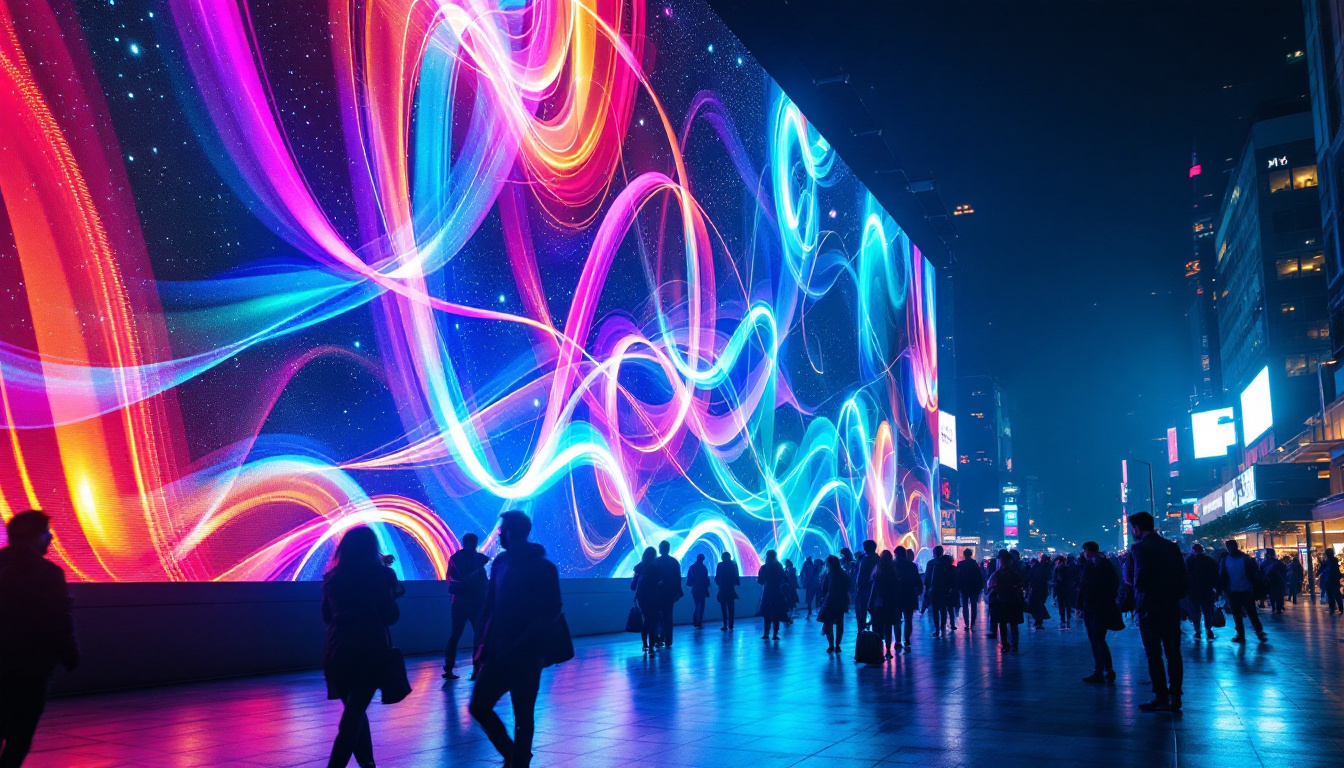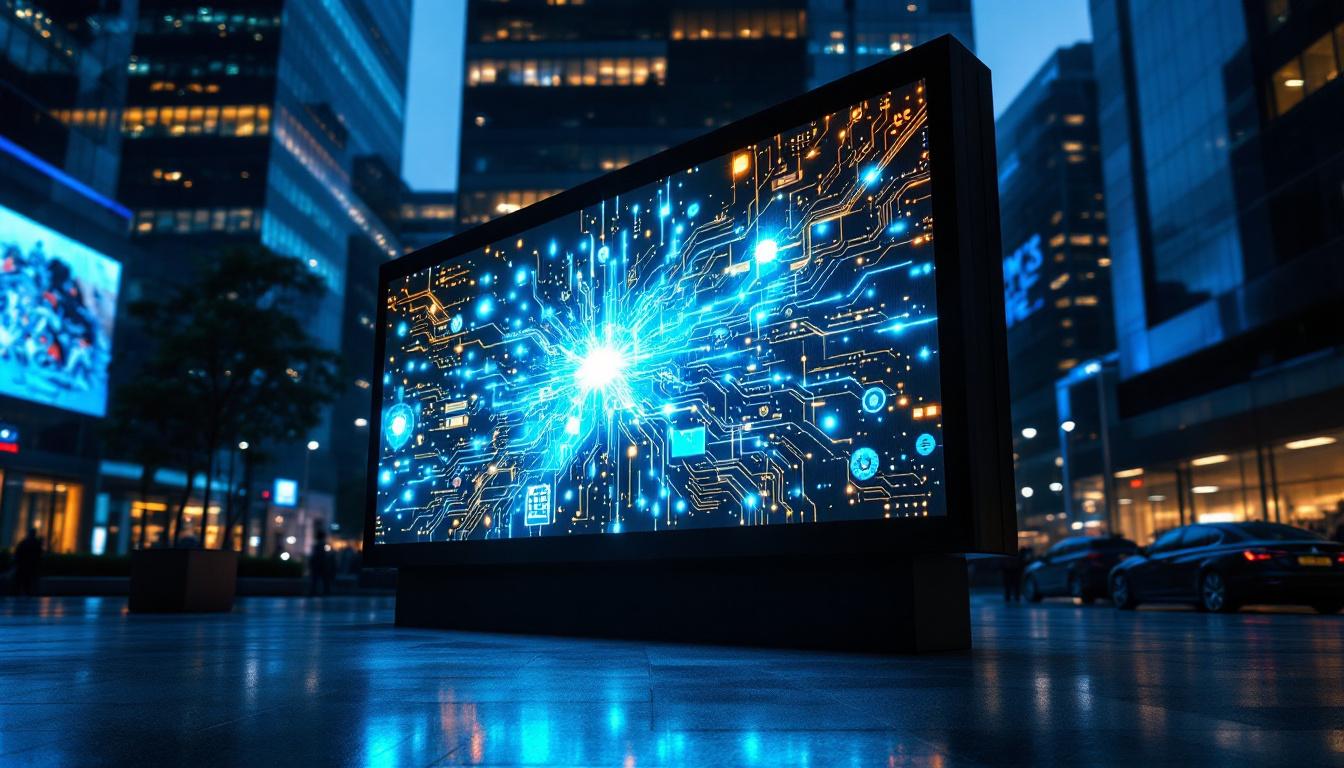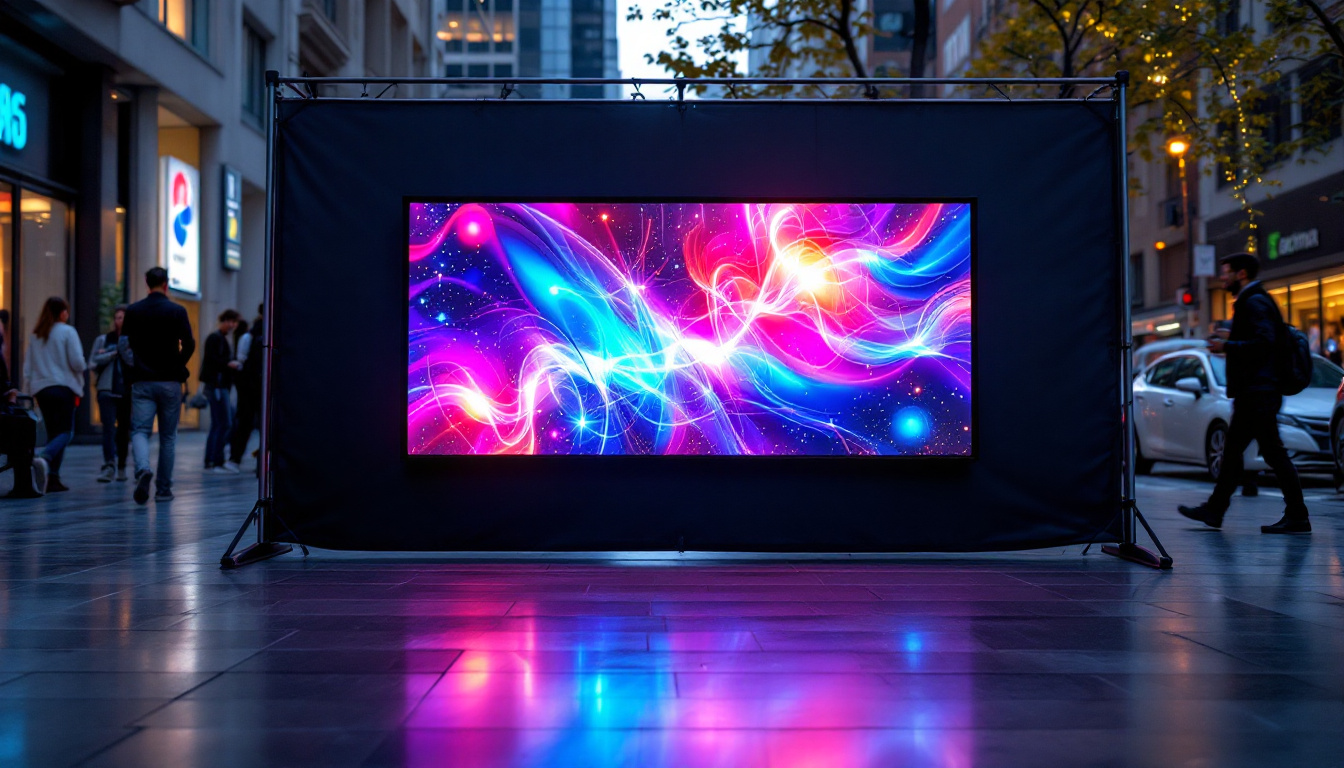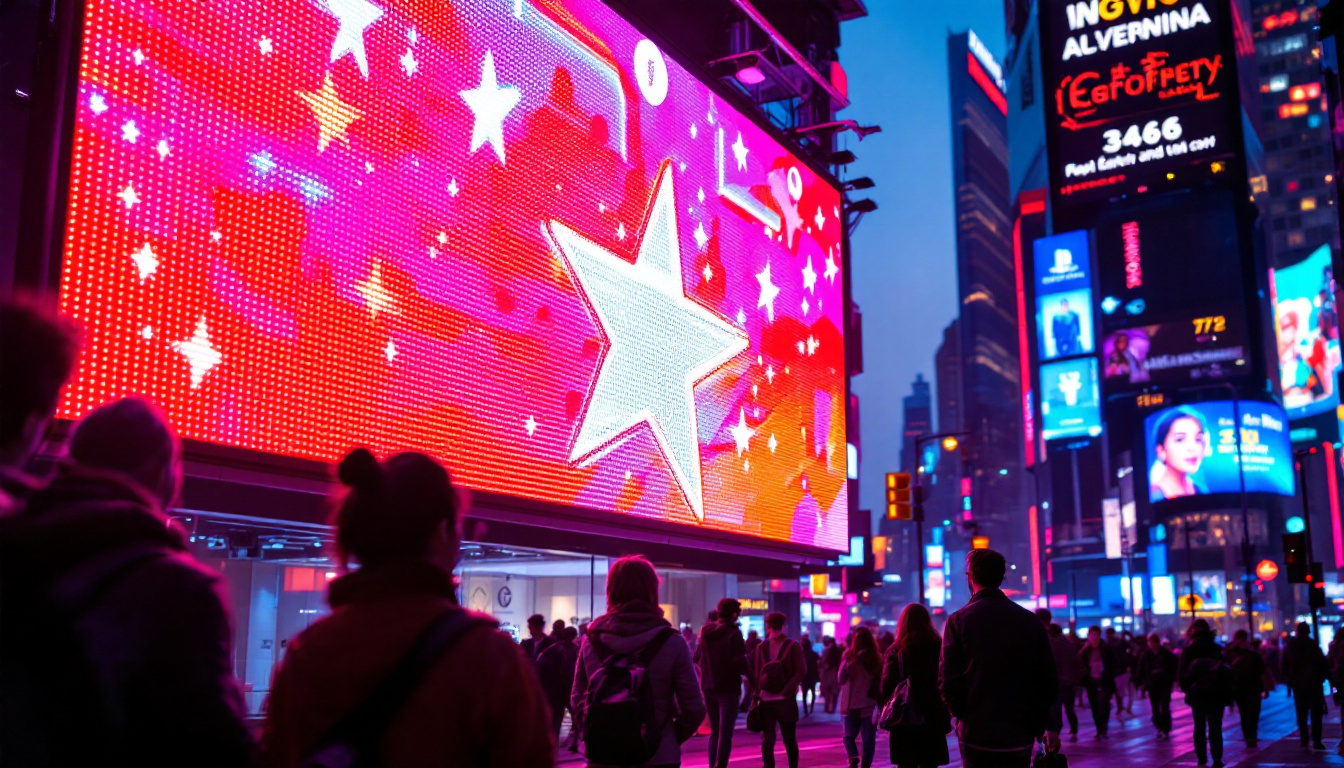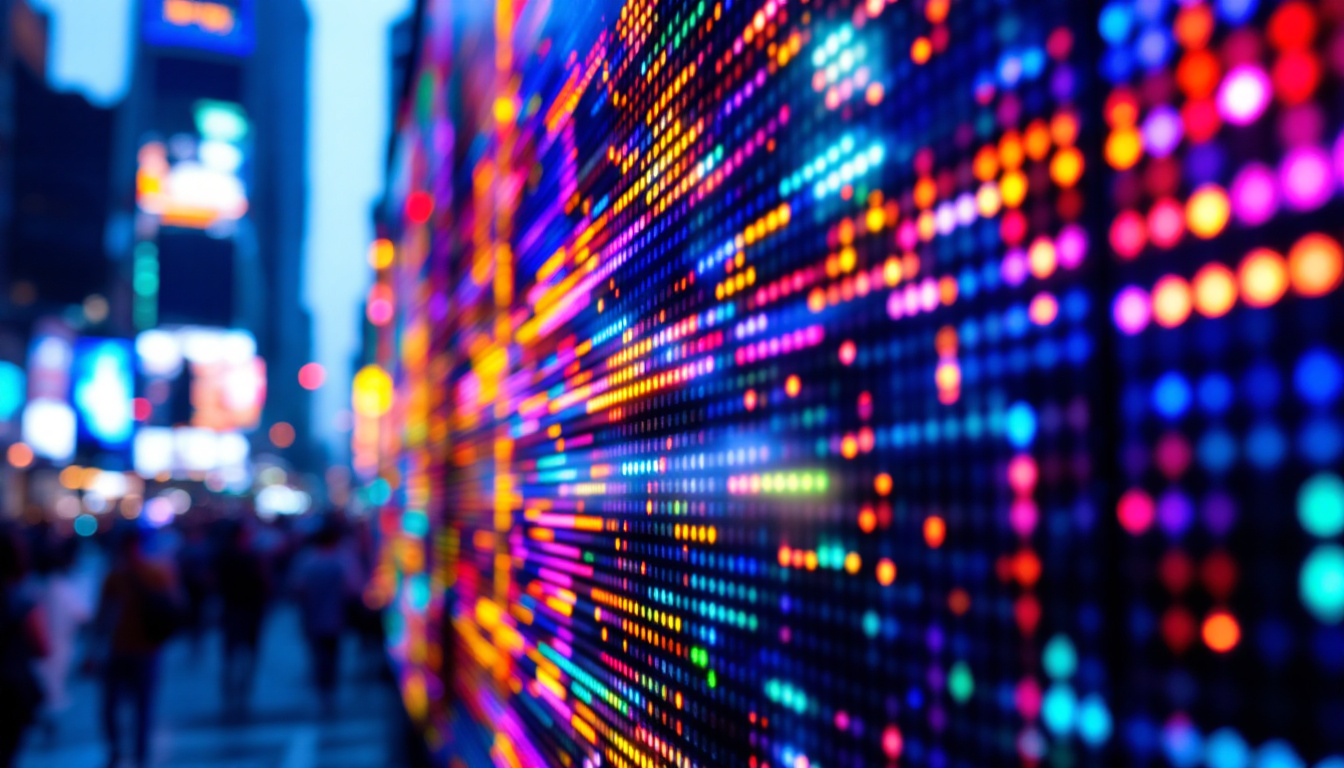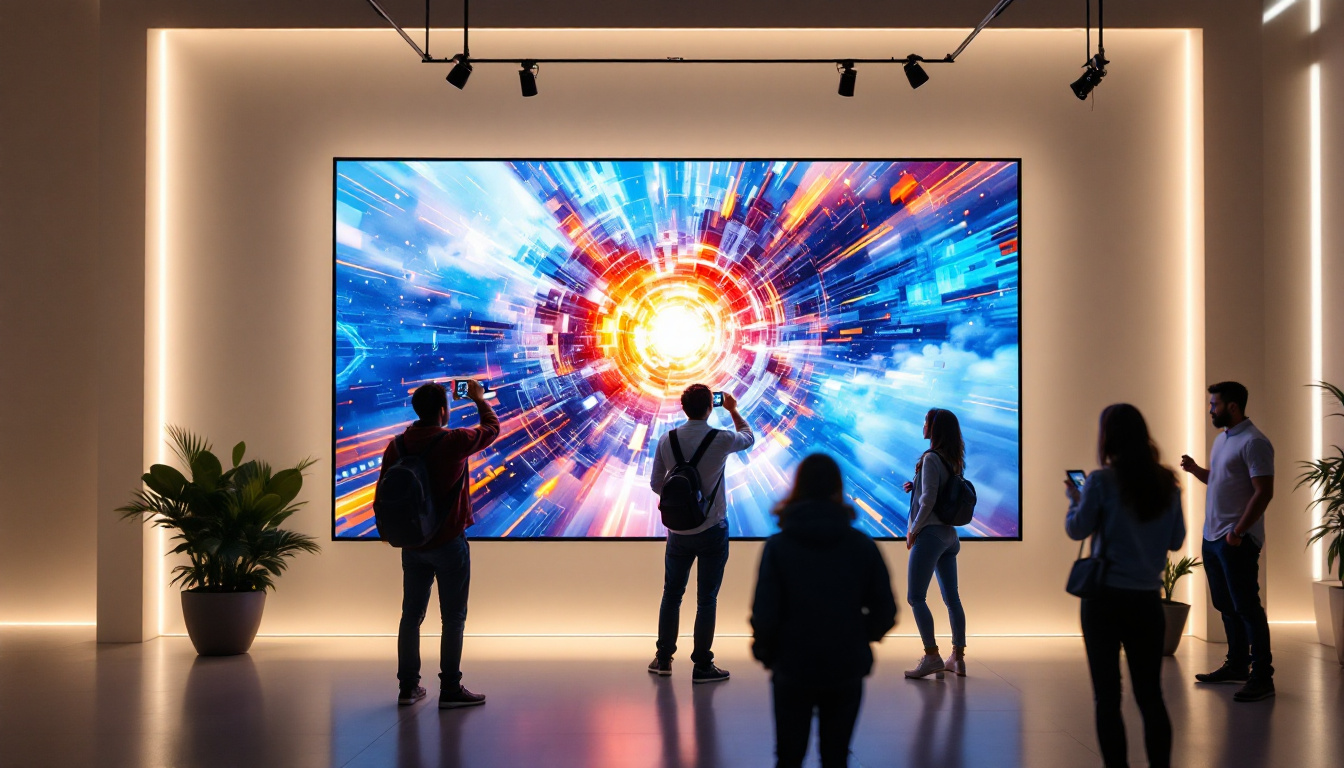Outdoor LED Digital Billboards: LED Display Explained
In the ever-evolving landscape of advertising, outdoor LED digital billboards have emerged as a transformative medium. These vibrant displays not only capture attention but also offer versatility and dynamic content capabilities. This article delves into the intricacies of LED displays, exploring their technology, benefits, and applications in the advertising world.
Understanding LED Technology
LED, or Light Emitting Diode, technology has revolutionized the way visuals are presented in outdoor advertising. Unlike traditional billboards that rely on static images, LED displays utilize thousands of tiny diodes to produce bright and colorful images that can change in real-time. This dynamic capability not only captures the attention of passersby but also allows advertisers to convey multiple messages throughout the day, optimizing their advertising space effectively.
The Basics of LED Displays
At its core, an LED display consists of a matrix of individual light-emitting diodes that work together to create images and animations. Each pixel on an LED screen is made up of red, green, and blue diodes, which combine to produce a full spectrum of colors. This RGB model allows for high-definition visuals that can be seen clearly even in direct sunlight. The technology behind LED displays has advanced significantly, incorporating features such as pixel pitch, which determines the distance between the centers of two adjacent pixels. A smaller pixel pitch results in a higher resolution and sharper images, making it ideal for close viewing distances.
LED displays are typically categorized into two main types: indoor and outdoor. Outdoor LED displays are designed to withstand various weather conditions, featuring robust construction and enhanced brightness to ensure visibility from great distances. Indoor displays, on the other hand, often prioritize color accuracy and resolution, making them perfect for events, concerts, and retail environments where close proximity viewing is common.
How LED Displays Work
The operation of an LED display involves several key components, including the control system, power supply, and the LED modules themselves. The control system manages the content being displayed, allowing for real-time updates and scheduling of advertisements. This flexibility is one of the primary advantages of LED technology, enabling businesses to adapt their messaging based on time of day, audience demographics, or even current events. For instance, a restaurant could promote breakfast specials in the morning and switch to dinner promotions in the evening.
Power supplies ensure that each LED module receives adequate energy to function correctly. The brightness and color accuracy of the display depend significantly on the quality of these components, making it essential to invest in high-quality materials for optimal performance. Additionally, advancements in energy efficiency have made modern LED displays more sustainable, consuming less power while delivering brighter and more vivid visuals, which is a crucial consideration for businesses aiming to reduce their carbon footprint.
Types of LED Displays
There are several types of LED displays used in outdoor advertising, each tailored to specific needs and environments. Common types include:
- Full-Color Displays: These are capable of displaying a wide range of colors and are ideal for vibrant advertisements. They are often used in high-traffic areas where capturing attention is essential, such as Times Square in New York City.
- Monochrome Displays: Typically used for simple text and graphics, these displays are cost-effective and suitable for straightforward messaging. They are often seen in applications like scoreboards or simple promotional signs.
- Tri-Color Displays: These use red, green, and blue LEDs to create a limited color palette, often used for basic animations and alerts. They are particularly effective for conveying urgent messages, such as traffic alerts or emergency notifications.
Furthermore, the integration of smart technology into LED displays has opened up new possibilities for advertisers. With the ability to connect to the internet, these displays can utilize data analytics to optimize content delivery based on real-time audience engagement metrics. This means that businesses can tailor their advertisements not just to the time of day but also to the specific demographics of the audience present, enhancing the effectiveness of their campaigns significantly.
Benefits of Outdoor LED Digital Billboards
Outdoor LED digital billboards offer numerous advantages over traditional advertising methods. Their unique features make them an increasingly popular choice for businesses looking to enhance their visibility and engagement.
High Visibility and Impact
One of the most significant benefits of LED billboards is their ability to attract attention. The bright, dynamic visuals stand out against the backdrop of urban environments, ensuring that advertisements are noticed by passersby. This high visibility is particularly advantageous in busy areas where competition for attention is fierce.
Moreover, the ability to display moving images and videos enhances engagement. Studies have shown that dynamic content can capture viewer attention more effectively than static images, leading to higher recall rates and increased brand recognition.
Flexibility and Real-Time Updates
Another compelling advantage of outdoor LED digital billboards is their flexibility. Advertisers can easily update content in real-time, allowing for timely promotions, event announcements, or emergency messages. This adaptability is particularly beneficial for businesses that want to respond quickly to market changes or current events.
Additionally, LED displays can be programmed to show multiple advertisements in a rotation, maximizing exposure for various brands or products without the need for physical changes to the billboard structure.
Cost-Effectiveness Over Time
While the initial investment in outdoor LED digital billboards may be higher than traditional billboards, the long-term cost-effectiveness is noteworthy. LED technology is energy-efficient, consuming less power than other lighting options. This efficiency translates to lower electricity bills over time.
Furthermore, the durability of LED displays means they require less frequent maintenance and replacement. This longevity, combined with the ability to easily update content, makes LED billboards a smart investment for businesses looking to maximize their advertising budget.
Applications of Outdoor LED Digital Billboards
Outdoor LED digital billboards have a wide range of applications across various industries. Their versatility allows businesses to utilize them in creative and impactful ways.
Advertising and Marketing
The most common use of outdoor LED digital billboards is in advertising and marketing. Businesses leverage these displays to promote products, services, and brand messages. The ability to showcase vibrant visuals and animations makes them particularly effective for capturing attention and driving consumer engagement.
From retail promotions to event announcements, LED billboards can be tailored to meet the specific needs of advertisers, ensuring that the right message reaches the right audience at the right time.
Public Service Announcements
In addition to commercial applications, outdoor LED digital billboards are frequently used for public service announcements. Government agencies and non-profit organizations utilize these displays to communicate important information to the public, such as safety alerts, health advisories, and community events.
The real-time update capability of LED billboards allows for timely dissemination of critical information, making them an invaluable tool for public communication.
Event Promotion
Outdoor LED digital billboards are also popular for promoting events, such as concerts, festivals, and sporting events. Their dynamic nature allows event organizers to build excitement and anticipation through eye-catching visuals and countdowns.
By strategically placing LED displays in high-traffic areas, event promoters can reach a broad audience, increasing attendance and engagement.
Challenges and Considerations
Despite the numerous advantages of outdoor LED digital billboards, there are challenges and considerations that advertisers must keep in mind.
Regulatory Compliance
One of the primary challenges associated with outdoor LED billboards is navigating regulatory compliance. Many cities and municipalities have specific regulations governing the placement, brightness, and content of digital billboards. Advertisers must ensure that their displays adhere to these regulations to avoid fines or removal.
It is essential for businesses to work closely with local authorities and legal experts to understand the rules that apply to their advertising efforts.
Content Management
While the flexibility of LED displays is a significant advantage, it also requires effective content management. Businesses must develop a strategy for creating and scheduling content that resonates with their target audience. This involves not only designing visually appealing advertisements but also ensuring that the messaging is relevant and timely.
Failure to manage content effectively can result in missed opportunities or, worse, negative impressions if outdated or irrelevant content is displayed.
Technical Maintenance
Although LED displays are generally durable, they still require regular maintenance to ensure optimal performance. This includes cleaning the screens, checking for faulty LEDs, and updating software. Businesses must either have in-house technical expertise or partner with a reliable service provider to handle maintenance tasks.
Investing in routine maintenance can prevent costly repairs and extend the lifespan of the display, ultimately contributing to the overall effectiveness of the advertising strategy.
The Future of Outdoor LED Digital Billboards
The future of outdoor LED digital billboards looks promising as technology continues to advance. Innovations in LED technology and digital advertising are likely to shape the landscape in exciting ways.
Integration with Smart Technology
As smart technology becomes more prevalent, the integration of outdoor LED digital billboards with data analytics and artificial intelligence is expected to increase. This integration can enable advertisers to deliver personalized content based on real-time data, such as audience demographics and behavior.
For example, a billboard could display different advertisements depending on the time of day or the demographic profile of the viewers, optimizing engagement and effectiveness.
Enhanced Interactivity
The future may also see a rise in interactive LED displays that allow viewers to engage directly with the content. This could include touch screens or integration with mobile devices, enabling users to interact with advertisements in real-time.
Such interactivity can enhance the consumer experience, making advertisements more memorable and fostering a deeper connection between brands and their audiences.
Sustainability Initiatives
As environmental concerns become increasingly prominent, the outdoor advertising industry is likely to focus on sustainability initiatives. This could involve using eco-friendly materials for display construction, implementing energy-efficient technologies, and promoting sustainable messages through advertising content.
By aligning with sustainability goals, businesses can not only reduce their environmental impact but also resonate with consumers who prioritize eco-conscious practices.
Conclusion
Outdoor LED digital billboards represent a significant advancement in advertising technology, offering unparalleled visibility, flexibility, and engagement. As businesses continue to embrace this dynamic medium, understanding the intricacies of LED displays and their applications will be crucial for maximizing effectiveness.
While challenges such as regulatory compliance and content management exist, the benefits of outdoor LED digital billboards far outweigh the drawbacks. As technology evolves, the future of outdoor advertising looks bright, with opportunities for innovation and enhanced consumer interaction on the horizon.
In a world where capturing attention is paramount, outdoor LED digital billboards stand out as a powerful tool for businesses looking to make a lasting impression.
Illuminate Your Brand with LumenMatrix
Ready to elevate your advertising strategy with the vibrant and dynamic world of LED displays? Discover how LumenMatrix can transform your brand’s visibility and audience engagement. As a pioneer in LED display technology, we offer an extensive range of solutions, from Indoor and Outdoor LED Wall Displays to innovative LED Posters and Custom Displays. Embrace the future of visual communication with our cutting-edge digital signage that promises to captivate and resonate with your audience. Check out LumenMatrix LED Display Solutions and start creating unforgettable visual experiences today.

